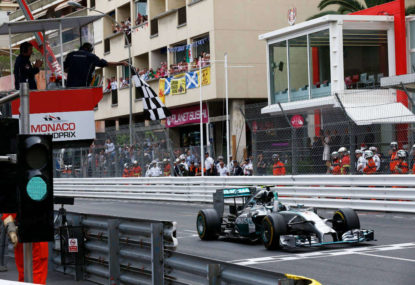The IndyCar Afterburn: The pitfalls and pinnacles of Long Beach 2024
The Long Beach Grand Prix is the Monaco of American motorsport, and this past weekend, the IndyCar Series reminded everyone exactly why. We witnessed…

It’s slow, it’s inaccessible, and it makes overtaking almost impossible – so why is it that the Monaco Grand Prix is so highly anticipated by teams, drivers, sponsors, and fans alike?
It’s a strange thing: all week I’ve been hyping up Formula One’s weekend on the riviera to anyone who will listen.
Simultaneously, I understand that, more likely than not, we’ll know Sunday’s race classification in near entirety by Saturday night after qualifying.
The event itself is fascinating. See the coastal Monte Carlo untouched by the Formula One circus and you’d think there simply isn’t room to host a grand prix, but come that one weekend in May and somehow, using every available centimetre of empty space, Formula One pulls off a modern miracle of motorsport.
Not, mind you, that such a feat is to the liking of everyone.
British travel writer AA Gill once colourfully described the jewel in Formula One’s crown as “the roar of selfishness, greed, vanity, avarice, addiction, lust, and pointless stupidity” in an article succinctly headed “Scumball Rally”.
More from our Experts
» Queensland will win Origin again and I couldn’t care less
» Russia needs to be banned from Rio
» Return on investment: Franklin makes Swans flag favourites
» Waratahs banking on Rob Horne in midfield
He’s not so far off the mark – one cannot marvel at the way Formula One nestles itself among the Monaco mountains without shuddering at the scenes surrounding the race weekend.
Real people live in Monte Carlo year round, but during the week-long party that is race week, the principality becomes the Ibiza for the rich and famous, albeit with more expensive drinks (though only marginally) and with fewer 20-somethings vomiting on your shoes.
Are we to conclude, then, that Monaco is little more than Formula One’s response to the Kardashians – empty and meaningless, popular only because someone else says it should be?
It wouldn’t be a hard summation to make – that is until Thursday morning, when the first engine is fired up in the famously red-coloured pit lane.
There is no spectacle in the motorsport world quite like watching a driver thread his car through the eye of a needle 19 times a lap, and to watch a grid of cars attempt the feat for 78 laps on a Sunday afternoon is breathtaking.
Racing around Monaco is a ludicrous prospect. The surface is almost universally uneven, half the track runs alongside a significant body of water, and it is the only event on the calendar to be unfailingly interrupted by loose drain covers. If you were to propose such a race in the modern day, the FIA would laugh you out of the building.
But the history counts for something, of course, and Formula One without Monte Carlo simply wouldn’t be Formula One. Imagine the sport without icons of such stature as Ayrton Senna or Graham Hill, just two men regarded to have mastered the tricky street circuit in their days, the former to the tune of six race victories, the latter dubbed Mr Monaco.
But even these timeless names are subordinated by this race, which transcends Formula One itself. Their mastery of the circuit speaks more of the esteem in which the track is held than it does of their racecraft.
The Monaco Grand Prix earns this mythical status because, unlike any other circuit in Formula One, it does not simply reward perfection; it demands it.
Anything less than 100 per cent in Monte Carlo leaves a driver woefully off the pace or smeared across the barriers. Hero or zero, man or mouse; there is no middle ground in Monaco.
Consider the sheer number of car/barrier incidents in last night’s free practice sessions – drivers risk it all from the moment the pit lane opens to the second it closes in an attempt to find the elusive sweet spot.
And predictable though the races tend to be, no track does drama like this one. From the record-low three finishers in 1996, delivering Olivier Panis his only win, to the still scarcely believable strategic howler committed by Lewis Hamilton and Mercedes from their comfortable lead in 2015, the result can be as difficult to predict as the roulette table at the Casino de Monte-Carlo.
In 2016 enter Red Bull Racing, which arrived at the seaside street circuit armed with a new Renault power unit in Daniel Ricciardo’s car and later watched the Australian set a 0.6-second buffer between him and the Mercedes cars.
The Silver Arrows, undisputed in Monaco since 2013, cut a decidedly shaky team after a less than stellar Thursday – the world championship-winning team all too aware that there is nowhere to hide between the famous Mediterranean buildings.
Formula One loves Monaco because Monaco is Formula One. It’s not about the glitz and the glamour, and it’s not even about that nebulous thing we call ‘racing’, artificial or otherwise – the Monaco Grand Prix is a pure driving and technical challenge.
Ironically enough, despite the abounding distractions off-track, in Monaco, Formula One is just sport, and around the famed ribbon of asphalt slithering through the city it is sport at its very best.
Follow @MichaelLamonato on Twitter.